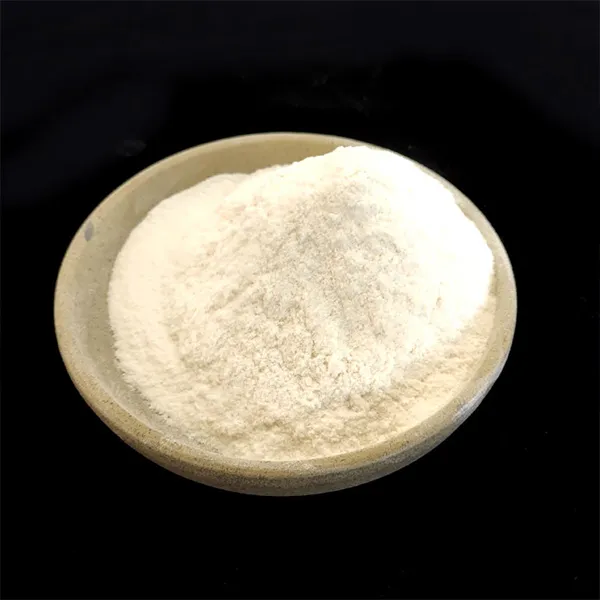Hydroxypropyl Methylcellulose (HPMC) A Versatile Polymer in Modern Applications
Hydroxypropyl methylcellulose (HPMC) is a semi-synthetic polymer derived from cellulose, the most abundant organic polymer found in nature. Through a series of chemical modifications, cellulose is transformed into HPMC, which boasts a wide array of properties that make it invaluable across various industries. As a non-ionic, water-soluble polymer, HPMC has garnered significant attention due to its thickening, binding, film-forming, and emulsifying capabilities. This article delves into the characteristics, applications, and benefits of HPMC, illustrating why it is a crucial component in modern formulations.
Properties of HPMC
HPMC possesses several key properties that distinguish it from other cellulose derivatives. Its solubility in both hot and cold water allows it to function effectively as a thickening agent, making it a popular choice in product formulations where viscosity control is essential. The degree of substitution (DS) of HPMC, a measure of the extent to which hydroxyl groups in cellulose are substituted by hydroxypropyl and methyl groups, impacts its solubility and viscosity characteristics. Additionally, HPMC is stable over a wide pH range and is resistant to enzymatic degradation, contributing to its versatility.
One of the most utilized properties of HPMC is its ability to form films. This film-forming capability is particularly beneficial in the pharmaceutical and food industries, where HPMC can be used to create coatings for tablets or as a barrier in food formulations. Furthermore, HPMC's compatibility with a variety of ingredients and its inert nature make it an excellent choice for sensitive applications.
Applications of HPMC
HPMC finds applications in numerous sectors including pharmaceuticals, food, construction, and cosmetics.
hydroxypropyl methylcellulose hpmc

1. Pharmaceuticals In the pharmaceutical industry, HPMC is widely used as a binder and excipient in tablet formulations, helping to ensure that active ingredients are evenly distributed and effectively delivered. It also serves as a film-coating agent, providing a protective layer that enhances the stability and release properties of various medications. Additionally, HPMC is utilized in controlled-release formulations, where its controlled swelling and dissolution properties can dictate the rate at which a drug is released into the body.
2. Food Industry In food applications, HPMC acts as a thickener and stabilizer in sauces, dressings, dairy products, and gluten-free goods. It enhances texture and mouthfeel, contributing to the overall sensory experience of the product. HPMC is also recognized for its ability to retain moisture, which helps to improve the shelf life of many food items.
3. Construction HPMC is a key additive in the construction industry, particularly in cement and mortar products. Its water-retaining properties ensure that cement remains workable for longer periods, facilitating easier application and better bonding strength. HPMC also enhances the flexibility and durability of the final product, making it suitable for various construction needs.
4. Cosmetics The cosmetic industry uses HPMC as a thickening and emulsifying agent in creams, lotions, and gels. It helps stabilize emulsions, which are mixtures of oil and water, preventing the separation of ingredients and ensuring a smooth and uniform texture. Moreover, HPMC is prized for its moisturizing properties, making it an excellent ingredient in skincare formulations.
Benefits of HPMC
The benefits of HPMC are numerous. Its non-toxic, biodegradable nature aligns with the growing demand for sustainable and eco-friendly products. Being a plant-derived polymer, HPMC can be produced sustainably, contributing to a reduced environmental footprint. Additionally, HPMC is hypoallergenic, making it suitable for use in products intended for sensitive skin.
The versatility of HPMC positions it as an essential ingredient in many formulations, emphasizing the importance of this polymer in contemporary applications. As research and development in HPMC continue, new formulations and uses are likely to emerge, ensuring that this compound remains at the forefront of innovation across various industries. Whether in pharmaceuticals, food, construction, or cosmetics, HPMC’s unique properties will keep it as a key player in the formulation game for years to come.
-
Rdp Powder: Key Considerations for Wholesalers in the Building Materials IndustryNewsJul.08,2025
-
Key Considerations for Wholesalers: Navigating the World of Hpmc - Based ProductsNewsJul.08,2025
-
Hpmc Detergent: Key Considerations for WholesalersNewsJul.08,2025
-
Key Considerations for Wholesalers: China Hpmc For Tile Adhesive, Coating Additives, Concrete Additives, and MoreNewsJul.08,2025
-
Crucial Considerations for Wholesalers: Navigating the World of Construction MaterialsNewsJul.08,2025
-
Key Considerations for Wholesalers Sourcing Additive For Cement, Additive For Concrete, Additive For Putty from Additive Manufacturer Shijiazhuang Gaocheng District Yongfeng Cellulose Co., Ltd.NewsJul.08,2025




